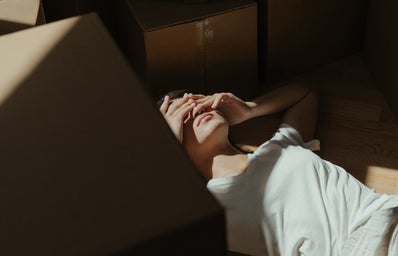Hello, Zuko here! Just kidding, I’m Molly Acquard, a long “Time Avatar: The Last Airbender” (ATLA) fan, and I watched the ATLA live action, so you don’t have to! Oh, the pain I went through. For those who don’t know, ATLA was originally an animated show that aired on Nickelodeon from 2005 to 2008. Though, I will say, if you don’t know much about this series, I suggest you do some of your own research, like maybe *cough* watch the *cough* show and come back to this article after. Unfortunately, there is just too much to unpack here for me to give a detailed explanation of the show.
As I mentioned, I’ve been a big fan of the original animated series since it aired back in 2005. Not just me, but my two older brothers as well. This show had such an impact on me as a kid and still does. It’s a huge part of my relationship with my brothers. We are constantly referencing the show and have seen it so many times I have lost count. We banded together to rewatch it all together when Covid first hit, and I have to say it’s probably one of my favorite memories with them, and the most fun I’ve ever had. So, as I hope you’re gathering, this show means a lot to me.
I just rewatched the animated series on my own and finished in perfect time to watch Netflix’s live action remake. So, I thought, what a great opportunity for an article! A review by a longtime fan! If only I knew then how much suffering I was about to endure. Buckle up ATLA fans because this one’s a doozy in the worst possible way.
In this first part I will be discussing how the plot was altered to fit a “more mature audience” and how that affects the three main protagonists and their developments in the first four episodes of season one. I will also try my best to note anything I feel the live action did well, but I’m going to be upfront in saying the moments are scarce.
Now, I could sit here and type out every little detail Netflix changed in the live action, but I’m not going to do that. One, because I would need more than two parts for that, and two, because that is not what the live action or this article is about. I am here to highlight the changes that were detrimental to the plot and development of the characters. Now, it was known that this live action would not be an exact remake of the original animated series. So, that is not the issue. Fans were told that this was to be a “more mature” version of the original for the longtime fans that are now adults. Personally, I thought, great! Maybe they’ll go more in depth on the more mature themes that were noted in the animated series, that would be cool to see!
I really wish they could have used the higher adult rating on the show to go more in depth on storylines they couldn’t take too far because the show had to be PG. It seems as if they have just upped the gore to a quite chilling and grotesque level. Which, in some instances works. I do think that occasionally showing the ruthlessness of the fire nation by showing them absolutely incinerating someone is an understandable device.
For example, the attack on the air nomads, which is something we don’t get to see in the animated show. We see some of the aftermath when Aang sees the ruins 100 years after the attack, but the live action starting with the backstory and showing the attack was something I felt was a good change and a valuable addition. Because the original show was meant for children’s viewers, we can forget just how brutal the Fire nation really was. To see the Fire nation murder innocent people and children really drove that point forward. On the other hand, as I continued watching, it felt a bit overused. When you are constantly showing fire benders incinerating and murdering people, I feel it takes away that shock of cruelty. Instead, a good middle ground could get the point across more effectively.
Now, the bulk of my issues with this adaptation comes from the characters and the plot points that were changed and therefore detrimentally affect character growth and development. The character who I feel suffers most from plot changes is Sokka. And with talking about Sokka in relation to the live action, I must bring up his sexism being largely altered. In the animated series, Sokka is quite misogynistic when first introduced, due to his sheltered upbringing. He believes men are the warriors and girls can’t possibly fight as well as guys. Dialing this down destroys an essential part of his development as a character. The first time Sokka is challenged and beaten in a fight by girls is when he, Katara and Aang venture to Kyoshi Island. He assumes it is a group of men who ambush and take them down. Enter Suki, the leader of the Kyoshi warriors, a group of skilled female fighters who protect the island.
Suki is the first one to change Sokka’s way of thinking. After being bested by Suki, Sokka challenges her, saying that it was the element of surprise that allowed her to win. She beats him again. Sokka is frustrated, but he begins to understand that Suki is incredibly talented, and he asks her to train him. Suki agrees to train him so long as he follows all the traditions, one of which being wearing the traditional Kyoshi warrior uniform, another test of his toxic masculinity.
In the live action, Sokka trains in his own clothes. Why a show that claims to want to address “more adult topics” diminishes the sexism in one of its main characters and eliminates the scene in which that character must dress in garments and makeup typically worn by women, is beyond me. It’s quite strange to me that an animated children’s show from the early 2000’s is somehow more progressive than a 2024 live action remake that claims to be for an older audience. The gratification you feel when watching Suki knock Sokka–pardon my French–on his ass continually in the animated series is crucial to Sokka’s character development. Seeing the change in the way he thinks and how it positively affects his character as the show progresses.
We aren’t done, either! I found that in the live-action, Sokka seems annoyed with everything and anything. They have taken away his witty, funny and lighthearted sarcasm and turned him into a complete jerk. His sarcasm is not supposed be backed by anger or pure annoyance like it seems to be in the adaptation. What makes Sokka’s character so well written is that he is serious when it comes to stopping the war against the Fire Nation. He is a serious warrior, and his intelligence is immense. He’s the guy with a plan. He might not be able to bend any elements, but he is dedicated to proving himself as a worthy competitor.
He feels insignificant at times, being the only non-bender besides Suki in the group. Even then, Suki had official training that lasted years, Sokka’s training is nearly nonexistent. He most likely had to train himself because even his training with Suki is brief. Removing these flaws takes away from what makes Sokka such a well-loved and compelling character. Just because Sokka acquires more serious attributes does not mean he is unable to let loose. He may be the guy with the plan, but he is also the guy with the jokes, the guy who keeps his friends laughing. He’s Sokka: the meat and sarcasm guy, if you will. The live-action portrayal of Sokka is more Sokka: the veggies and straight-talk fellow.
Okay, now let’s talk about Katara. This will be brief because there’s not much to say, which I feel speaks volumes. Katara is just kind of there in the live action. She doesn’t have much substance as a character which is unfortunate because she is the character I grew up loving. Any plot point that once featured Katara and involved her characterization has been removed or changed in a way that she isn’t really seen. I’m only going to highlight the change that made the most disruption: the waterbending scroll.
In episode nine, titled “The Waterbending Scroll” in season one of the animated series, Katara steals a waterbending scroll from pirates to jumpstart her training before she and Aang learn from the waterbending masters in the Northern water tribe. She struggles immensely to teach herself using the scroll. Aang tries the same moves and can perform them effortlessly. She’s angered by this and jealous that waterbending is coming so easy to him.
Yes, Aang is the avatar, but he’s never tried waterbending before. Katara has been practicing and trying to teach herself nearly her whole life. It looks like he’s not even trying, yet he’s able perform the moves from the scroll with ease and near perfection the first time around. She on the other hand puts everything she’s got into even the most basic forms. All her concentration, all her strength and still, the water comes back and slaps her in the face (literally, in the case of her water whip attempts). By changing the way Katara receives the scroll and her struggles with waterbening, it diminishes the evolution of her skills and the relationship between Katara and Aang. Katara being given the scroll in episode one instead of stealing it lessens her hunger for mastering waterbending.
I want to finish this first article with Aang. Now, there has been some talk about how Aang’s character has improved in the live-action. Some people believe that he’s smarter, and more compelling, specifically when it comes to his reaction on being frozen in the iceberg for 100 years. In the live-action, Aang realizes immediately that being frozen for 100 years means all his friends are dead. I disagree with this change. In the animated series, Aang was not stupid, nor did he not realize that 100 years passing meant that everyone he knew was most likely dead. Aang didn’t want to believe that 100 years had passed. He was a kid trying to ignore the reality of the situation because he wasn’t ready. It wasn’t stupidity, it was denial. It was only when went with Sokka and Katara to the Southern Air Temple and saw Monk Gyatso’s bones that he could no longer deny that he was the last airbender. It was the tipping point. Seeing the proof with his own eyes that his friends are gone, that the man who raised him is gone, is too much. The memories of himself with Gyatso, the anguish and emotions that follow are uncontrollable. The fact that it was Katara who can bring him out of the Avatar state is immensely important to their character development and relationship.
The entirety of Aang’s character arc in season one is him being a kid and not necessarily avoiding his duties so much as trying to pretend that they aren’t as dire as they are. Therefore, he makes so many stops on his way to the North Pole. He makes new friends (Sokka and Katara), who were very sheltered and had never left their home before. Aang is just a kid who wanted to have fun. He never wanted to be the Avatar, and he definitely didn’t want the responsibilities that came along with it. He wanted to pretend his responsibilities weren’t imminent and show Sokka and Katara the beauty of the world and all he loved to do on it. It was in doing so that they bonded and became closer. Not just friends, but family. It wasn’t until Aang seeks Roku through his connection to his past lives and learns about Sozin’s Comet that he relents, understanding the gravity of his mission as the Avatar. Even after a doomsday warning from Roku, and a now renewed perspective on his quest, they (Aang, Katara, Sokka and later, Toph) still went on goofy side adventures. They found time for fun because they were children. That is the most integral part of the show. It is also what the live-action removes completely.
All in all, so far it seems as if Netflix took out a chunk of plot from the animated series, thinking they could not fit enough of the material into the live-action, realized they took out too much, and decided instead of putting the original storylines back in, they would just make up new storylines to replace them. They should have chosen one or the other. A live-action with new storylines or a live-action that followed the plot of the original show the way a book-to-movie adaptation would. Because of the way the creators of the live-action massacred the plot, the animated show ends up doing a far better job portraying complex characters and storylines.
The live-action throws one funny call-back from the animated series into the show for a nostalgia cash grab and they’re like hey! Look, guys! We did the thing! Hahahaha. It doesn’t work though, because they have destroyed the context, no longer making it funny. A prime example of this is King Bumi’s lettuce leaf joke. Because they took Sokka and Katara out of the scene, it has absolutely no reason to be there. It no longer makes sense. It’s like when Zuko tries to tell Iroh’s favorite tea joke but can only remember the punchline. Simply saying lettuce leaf is not the joke but hey! It’s a direct quote from the original so it’s funny, right? Dropping the serious tone to make a silly reference to the original show for a split second only to go back to a somber tone turns the characters into a shell of what they’re supposed to be. Taking out the humor and innocence within the show and its characters doesn’t work because that’s what made it infinitely well-loved.
Part 2 will be up as soon as possible. There, I’ll focus on everyone’s favorite royals: Azula and Zuko. Alright, now leaf me alone I’M BUSHED after watching this appalling excuse of a show.


